
Roque de los Muchachos Observatory
The Roque de los Muchachos observatory is located in the westernmost island of the Canary Islands Archipelago, La Palma, "la isla bonita".

The several telescopes of the observatory are spread along the board of the chimney of the great original volcano, at 2400m altitude.

At this altitude the observatory is well above the atmospheric inversion zone, being the turbulence zone and in most of the days the clouds around the 1000m. In the photo bellow one can see the island's shadow in the clouds:
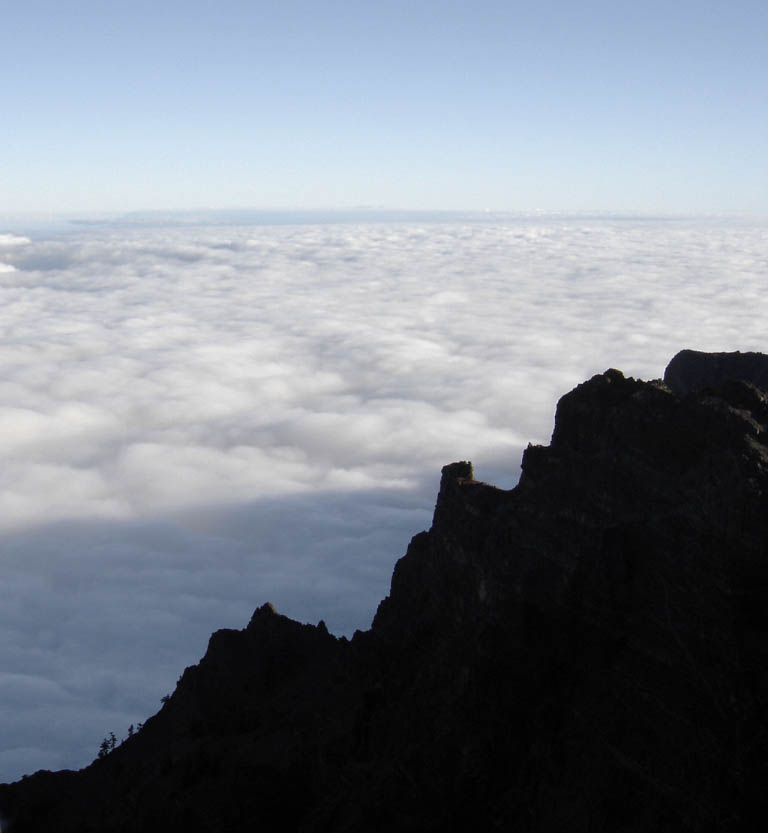
The observatory is managed by the Instituto de Astrofísica de Canárias (IAC). To date, all the telescopes from the observatory were obliged to lend 20% telescope time to Spanish scientists, proof of the interest of this country in the scientific development in astrophysics.
Gamma-ray Telescope (GRT)
The Gamma-ray telescope collects the blue photons from the Cerenkov radiation. This radiation is due to energetic particles travelling at a speed greater than the light speed for the air.

Swedish Solar Telescope (SST)
It is a 1m aperture refractor telescope, whose interior is submitted to vacuum during the observations. To date, the biggest solar telescope in earth:
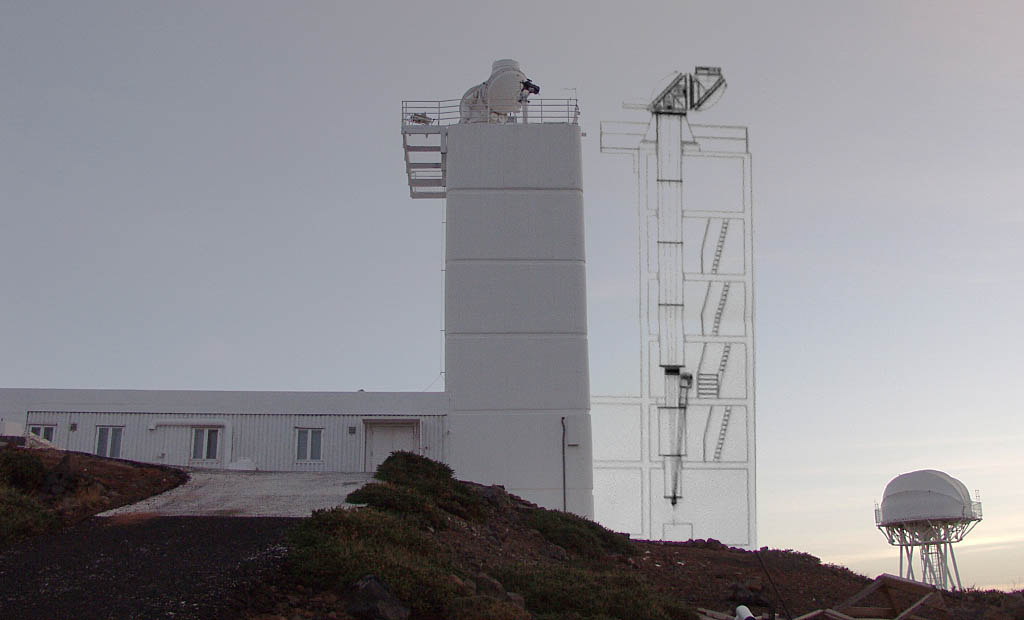
At the top, the objective is oriented through an equatorial mechanism in a way that all the telescope's structure remain fixed (system known as "heliostat"):

Then the image go through the 20m focal distance up to the working zone. All the tubes have the assignment of the system cooling:

It is here at this table that the adaptive optics and the filters act in order to scientific images to be obtained. In this case, images in Hα, CaII-K and CaII-H. A spectrograph is located in an adjacent room. The excellent seeing monitorization techniques and the optical quality of the environment are among the reasons for this telescope excellence.

William Herschel (WHT)
The telescope is property of the Isaac Newton Group. The largest single mirror in this observatory, with 4.2m diameter, is mounted in this telescope.

Two cameras (in blue) are mounted at the secondary focus. The aim was to perform photometry with two filters simultaneously, a study, at date, on planetary nebulae:

At the primary focus, at right, a camera (blue) is also mounted. In second plane, the huge primary mirror can be seen. The triangular pieces that surround the mirror are its protection system, covering it when not in use:

The mirror is really huge:

The altazimuthal mount is controlled through this console:

Isaac Newton
The Isaac Newton is another telescope from the Isaac Newton Group at Roque.
The telescope lays on an horseshoe equatorial mount. Its mirror is 2.5m diameter.

National Galileo Telescope (NGT)
Property of Fundación Galileo Galilee - INAF. This telescope is technologically the most advanced instrument to date in this observatory on what concern active optics. Active optics correct all telescope's deformations due to its position.
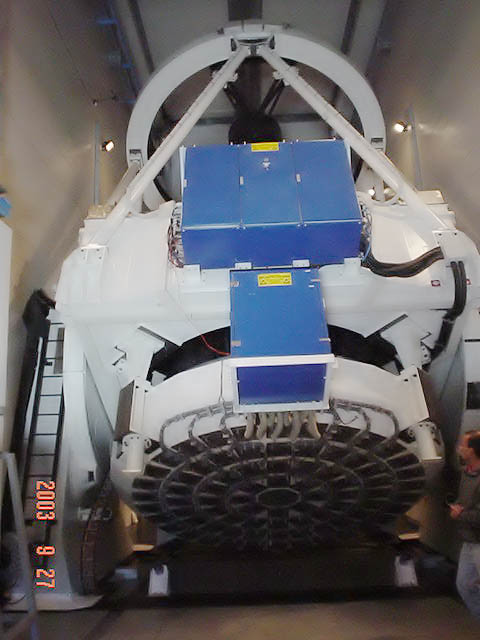
The primary mirror is thin, and has 3.58m diameter. A mirror is considered thin when its thickness is inferior to 25% of its diameter:
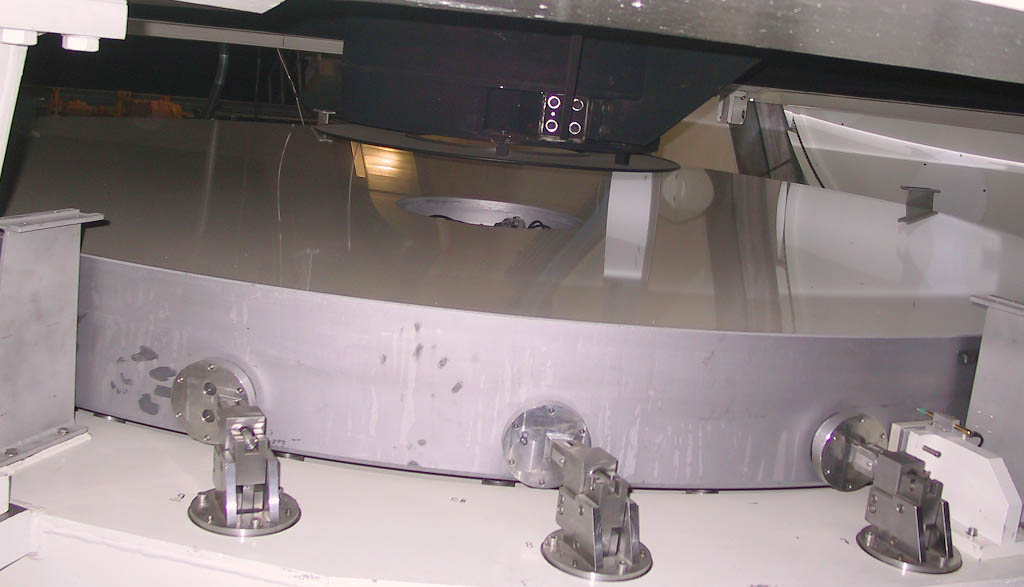
Thin mirrors are subject of deformations due to the gravity. They must be supported by pressure actuators that compensate these deformations:

In order to correct the atmospheric turbulence effects, the telescope is equipped with a sophisticated adaptive optics system. The CCD cameras can be seen in their golden containers:

The famous high-resolution spectrograph SARG is used for spectroscopy. It is responsible for the discovery of many exoplanets.
Mercator
This telescope is property of the Institute of Astronomy of the University of Leuven. Its main function is photometry.
The mirror is 1m diameter. All telescope is operated by one person only.
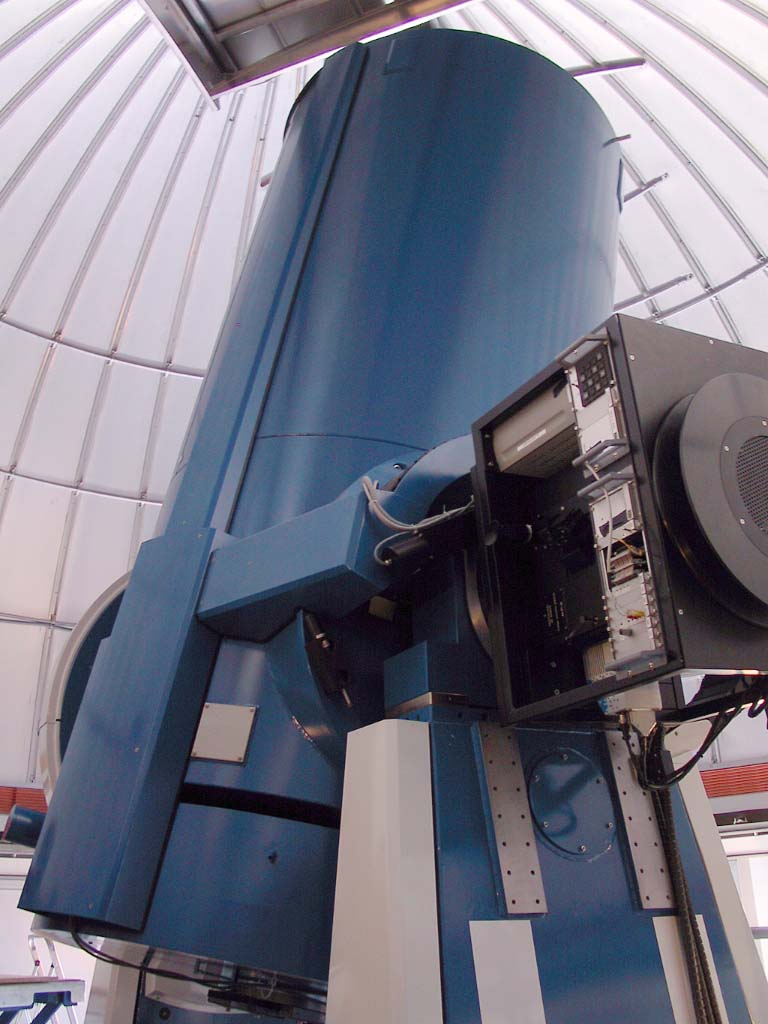
Grande Telescópio de Canárias, GranTeCan (GTC)
This telescope is, to date, under construction, and it will be one of the bigger telescopes in the world. Its mirror will be composed by 36 segments of 6 different shapes, will be hyperbolic with 10.4m diameter. The dome is 27m diameter:

At the top of the dome some cranes will allow the individual extraction and the placement of the mirror segments for servicing. These operations can be preformed during the day, not jeopardizing the normal activity of the telescope The windows around the dome serve for the thermal equalization inside the dome:

Know more about the GranTeCan and its last developments.
Liverpool Telescope
The university telescope of Liverpool is completely robotized an can be operated at distance:
To know more about this study visit, go to the Carreira's site.
Many of the photos of this visit were taken by Luis Carreira, Alberto Fernando, Rui Tripa e Hugo Silva, and modified by me. Much obliged to them.
Acknowledgments:
Instituto de Astrofísica de Canárias, IAC, for opening us all the doors in the observatory.
Agrupación Astronómica Isla de La Palma, for mediating with IAC in this visit realization.
Juan Antonio González, our host and president of the Agrupación Astronómica.
Javier Mendez, astrophysicist and public relations of IAC.
Marco Pedani, astrophysicist, support astronomer of GNT.
Noel Tano, astrophysicist, responsible for the seeing measurements at the Swedish Solar Telescope.
Bernard Nicolet, astrophysicist, scientist astronomer at Mercator.
Raul from GTC